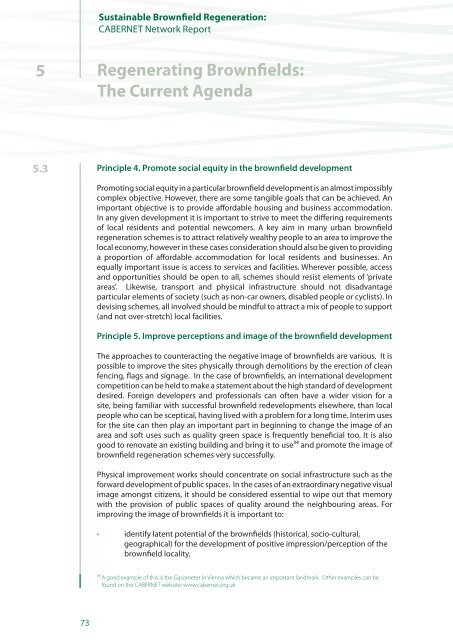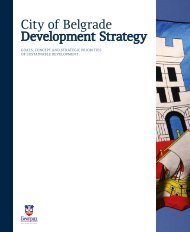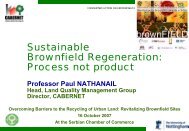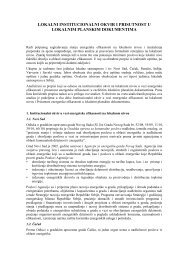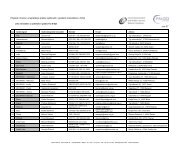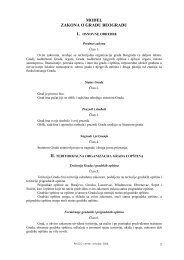Sustainable Brownfield Regeneration: CABERNET Network Report
Sustainable Brownfield Regeneration: CABERNET Network Report
Sustainable Brownfield Regeneration: CABERNET Network Report
Create successful ePaper yourself
Turn your PDF publications into a flip-book with our unique Google optimized e-Paper software.
<strong>Sustainable</strong> <strong>Brownfield</strong> <strong>Regeneration</strong>:<strong>CABERNET</strong> <strong>Network</strong> <strong>Report</strong>5Regenerating <strong>Brownfield</strong>s:The Current Agenda5.3 Principle 4. Promote social equity in the brownfield developmentPromoting social equity in a particular brownfield development is an almost impossiblycomplex objective. However, there are some tangible goals that can be achieved. Animportant objective is to provide affordable housing and business accommodation.In any given development it is important to strive to meet the differing requirementsof local residents and potential newcomers. A key aim in many urban brownfieldregeneration schemes is to attract relatively wealthy people to an area to improve thelocal economy, however in these cases consideration should also be given to providinga proportion of affordable accommodation for local residents and businesses. Anequally important issue is access to services and facilities. Wherever possible, accessand opportunities should be open to all, schemes should resist elements of ‘privateareas’. Likewise, transport and physical infrastructure should not disadvantageparticular elements of society (such as non-car owners, disabled people or cyclists). Indevising schemes, all involved should be mindful to attract a mix of people to support(and not over-stretch) local facilities.Principle 5. Improve perceptions and image of the brownfield developmentThe approaches to counteracting the negative image of brownfields are various. It ispossible to improve the sites physically through demolitions by the erection of cleanfencing, flags and signage. In the case of brownfields, an international developmentcompetition can be held to make a statement about the high standard of developmentdesired. Foreign developers and professionals can often have a wider vision for asite, being familiar with successful brownfield redevelopments elsewhere, than localpeople who can be sceptical, having lived with a problem for a long time. Interim usesfor the site can then play an important part in beginning to change the image of anarea and soft uses such as quality green space is frequently beneficial too. It is alsogood to renovate an existing building and bring it to use³⁴ and promote the image ofbrownfield regeneration schemes very successfully.Physical improvement works should concentrate on social infrastructure such as theforward development of public spaces. In the cases of an extraordinary negative visualimage amongst citizens, it should be considered essential to wipe out that memorywith the provision of public spaces of quality around the neighbouring areas. Forimproving the image of brownfields it is important to:• identify latent potential of the brownfields (historical, socio-cultural,geographical) for the development of positive impression/perception of thebrownfield locality,³⁴ A good example of this is the Gasometer in Vienna which became an important landmark. Other examples can befound on the <strong>CABERNET</strong> website: www.cabernet.org.uk73


